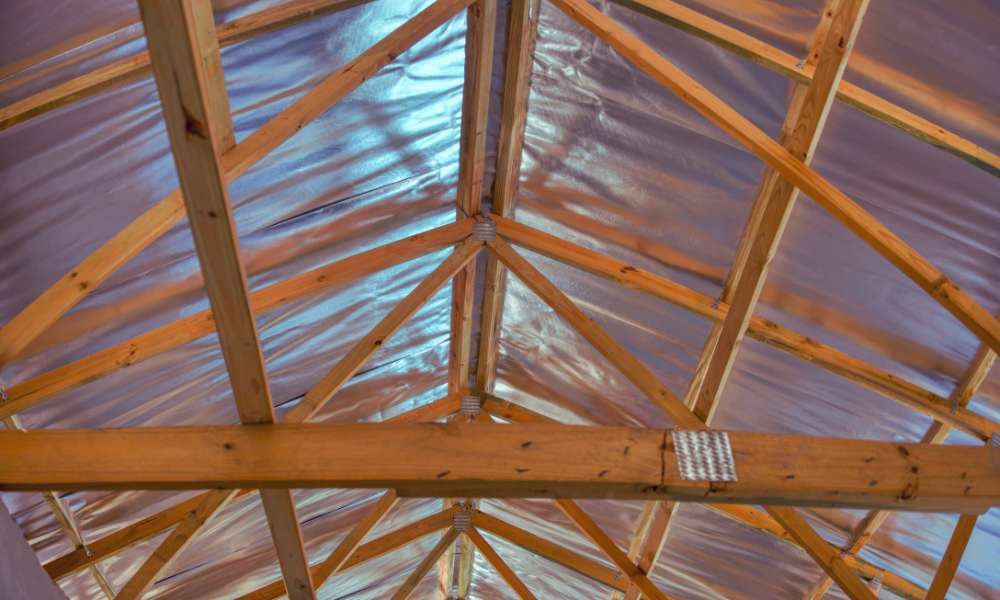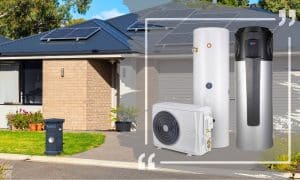Your roof insulation is a critical element of your home because it maintains comfortable indoor temperatures and reduces energy consumption. There are several options of roof insulation for Aussies that you can choose from. Also, when combined with solar, roof insulation can further improve your home’s energy efficiency and reduce your carbon footprint.
Roof insulation: what is it?
Roof insulation is different from ceiling insulation. Insulation to the roof is a product installed under the roofing material that prevents heat flow. It keeps indoor temperatures cooler in the summer and warmer in the winter. On the other hand, ceiling insulation refers to the products installed between the ceiling joists.

R-value
The R-value indicates the effectiveness of the insulation material in preventing heat loss and heat gain. That means the higher the R-value, the more effective it is and the more significant your savings will be on your energy bills. This means that you should take the time to choose the right R-value for roof insulation to ensure your home can regulate temperatures well, regardless of the time of the year.
The Australian Building Codes Board (ABCB) details minimum R-values for different climate zones. Your insulation should comply with Australian standards to ensure you meet regulatory requirements and maximise energy efficiency.
Some examples when choosing the best R-value are for cooler climates, such as Melbourne, an R5.0 or R6.0 is ideal for the roof, while for warmer climates like Brisbane, an R4.0 value is a great choice.
Top roof insulation options
There are different types of roofing insulation. Below are the top choices in Australia:
- Bulk insulation: The products used for this, such as batts and rolls, contain millions of tiny air pockets within their structure which break up the flow of heat. This option is best when you want to reduce heat flow conduction between objects that are adjacent to each other.
- Reflective insulation: This involves a foil layer backed by a paper or plastic layer, which is used when you want to reflect radiant heat.
- Spray foam insulation: This liquid form expands into a foam when applied. It fills gaps and provides a seamless barrier against air leaks and heat transfers.

Considerations for different roof types
If you have a metal roof, you can combine reflective foil with bulk insulation to improve thermal performance and reduce noise from rain. Bulk and reflective insulation work best for pitched roofs, but there needs to be enough ventilation to prevent moisture buildup.
Finally, for cathedral ceilings, insulation should have high R-values because of the limited space for insulation materials. That makes spray foam a great choice as it provides effective thermal insulation and air sealing.

Solar and roof insulation
Combining roof insulation with solar panels is an excellent move for homeowners looking to get the most energy efficiency and reduce their carbon footprint. Roof insulation can prevent heat loss and heat gain, which contributes significantly to the overall energy efficiency of your home.
What this means for your solar panels is that they will have less work to do in maintaining a comfortable indoor temperature, leading to more significant savings. Well-insulated homes can also help extend the lifespan of your solar panels as they help reduce system strain.
Integrating solar panels with roof insulation
There are a few key considerations when integrating your solar panels with roof insulation.
- Make sure the solar panels and insulation materials are compatible. Some insulation materials, especially those with high R-values, might need additional considerations to prevent overheating of the panels.
- Use mounting systems designed to work with specific insulation and roofing materials. The systems should securely attach the panels to the roof while maintaining the integrity of the insulation layer.
- There must be sufficient ventilation to prevent overheating of the panels and the insulation. It’s worth considering a ventilated racking system or simply ensuring proper airflow between the roof and the panels.
Investing in quality roof insulation can improve your home’s energy efficiency and create a more comfortable living environment. With a wide range of insulation materials available, there’s an option to suit every home and budget.
Considering the insulation benefits of rooftop solar panels, exploring solar options with Energy Matters can be worthwhile. Our expertise in solar solutions may offer insights into optimising your home’s energy efficiency. Get your FREE quotes for solar panels, batteries, and more.













































